
The warmth of the sun, the smell of the ocean, and the sight of busy streets and stores. California. LA. One of my favorite places in the US. California offered me a sanctuary; a way to get out of the miserable cold and the stresses of college in Utah. I was most excited about visiting the Korean Asian Market – which had every corner filled with fresh produce and familiar asian products: bunches of napa cabbage, Korean banchan ready to go, fresh Korean pears and Asian fluffy breads. I was especially excited to see ready-to-go steamed sweet potatoes, soft purple flesh encased in its unpeeled skin. It was really the most amazing Thanksgiving I’ve ever had. We cruised through LA’s finest restaurants: a beautiful milky broth of seoullongtang (Beef Bone Soup) with the tastiest kimchi I’ve ever had in a local Korean hole-in-the-wall store to creamy Vegan Dark Chocolate Coconut Ice Cream From Jeni’s Ice Cream. I had also had the best grilled chicken with a sweet-tangy coleslaw that was to die for. But the highlight would have to be the humble bowl of Korean cold noodles – naengmyun: Chewy noodles in icy broth flavored with mustard, vinegar and radish. It was an unexpected surprised who knew that the simplest of all dishes was the best? I was literally in food paradise – not to mention Korean food heaven. 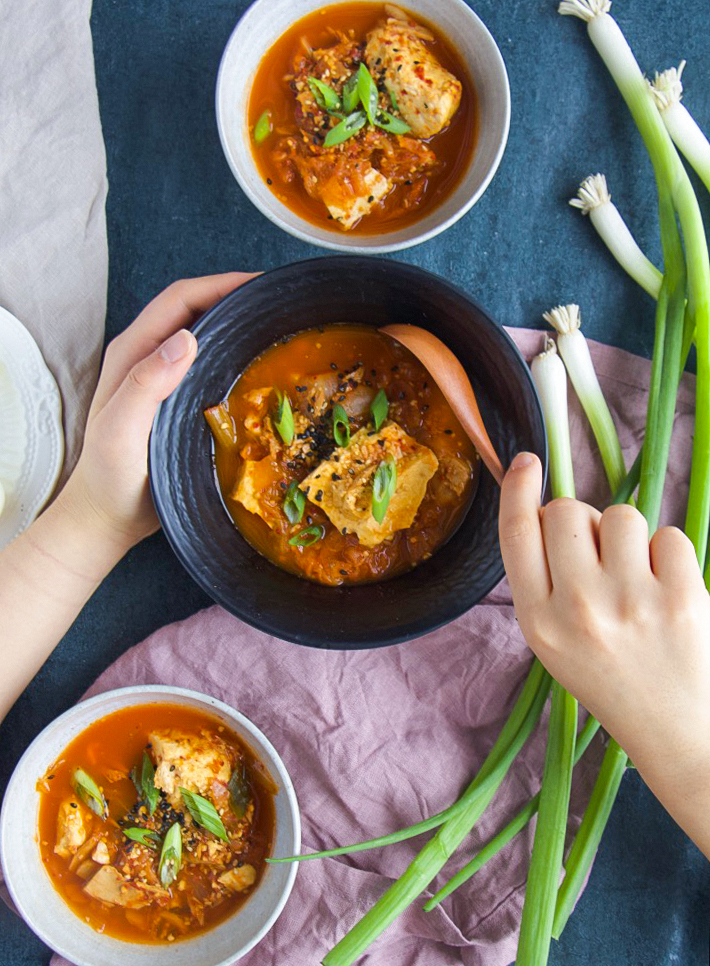 Coming home from this incredible weekend, left me homesick for the wonderful Korean food I had enjoyed. Zoe and I decided to make kimchi jigae (traditional kimchi stew) with zucchini hobak (stirfried zucchini), Sangchu Hobak (stirfried cabbage) and roasted cumin pumpkin. A good meal to waive off that longing for Asian Food. We decided that we would share our kimchi jigae recipe with you today.
Coming home from this incredible weekend, left me homesick for the wonderful Korean food I had enjoyed. Zoe and I decided to make kimchi jigae (traditional kimchi stew) with zucchini hobak (stirfried zucchini), Sangchu Hobak (stirfried cabbage) and roasted cumin pumpkin. A good meal to waive off that longing for Asian Food. We decided that we would share our kimchi jigae recipe with you today. 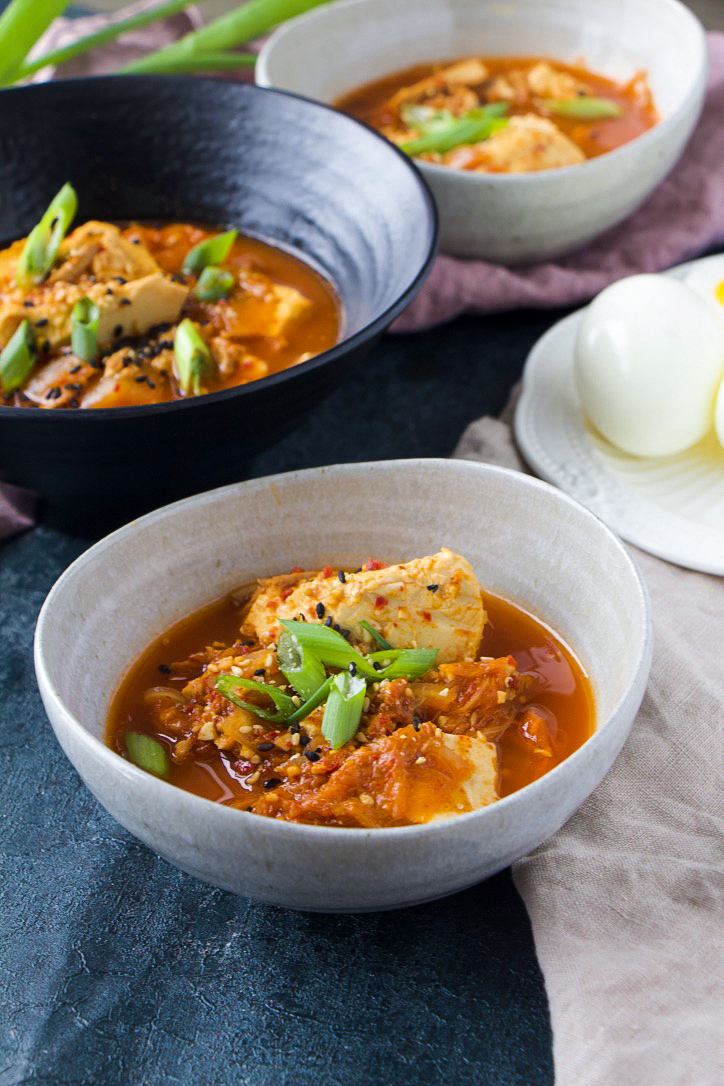 Kimchi Jigae is a beautiful spicy stew often enjoyed in the winter. At its core, it is basically kimchi cooked in broth flavored with fatty pork, soy sauce, sesame oil and chili paste. Kimchi jiggle is known to be very pungent and sour because of the aged kimchi that is used. Personally, I don’t really like the sour taste so adding broth helps alleviate that as well as adding more liquid: kimchi ratio. That way we don’t have to add any additional sugar to balance it out. So today this is our unique version that features a “healthier” and “cheaper” alternative, perfect even for college students (like us). Kimchi is filled with natural probiotics that is amazing for your gut and also helps with bowel movements. Instead of pork we added tuna and silken tofu as a source of protein. Tuna doesn’t provide that rich flavor that red meat does so we have opted to add a lot of aromatics and soy sauce for that extra touch of “umami”. Traditionally anchovy stock is used but here you can use any stock that you have on hand. We like to serve this with scallions, sesame seeds, seaweed and rice. It really is comfort food in a bowl – literally.
Kimchi Jigae is a beautiful spicy stew often enjoyed in the winter. At its core, it is basically kimchi cooked in broth flavored with fatty pork, soy sauce, sesame oil and chili paste. Kimchi jiggle is known to be very pungent and sour because of the aged kimchi that is used. Personally, I don’t really like the sour taste so adding broth helps alleviate that as well as adding more liquid: kimchi ratio. That way we don’t have to add any additional sugar to balance it out. So today this is our unique version that features a “healthier” and “cheaper” alternative, perfect even for college students (like us). Kimchi is filled with natural probiotics that is amazing for your gut and also helps with bowel movements. Instead of pork we added tuna and silken tofu as a source of protein. Tuna doesn’t provide that rich flavor that red meat does so we have opted to add a lot of aromatics and soy sauce for that extra touch of “umami”. Traditionally anchovy stock is used but here you can use any stock that you have on hand. We like to serve this with scallions, sesame seeds, seaweed and rice. It really is comfort food in a bowl – literally.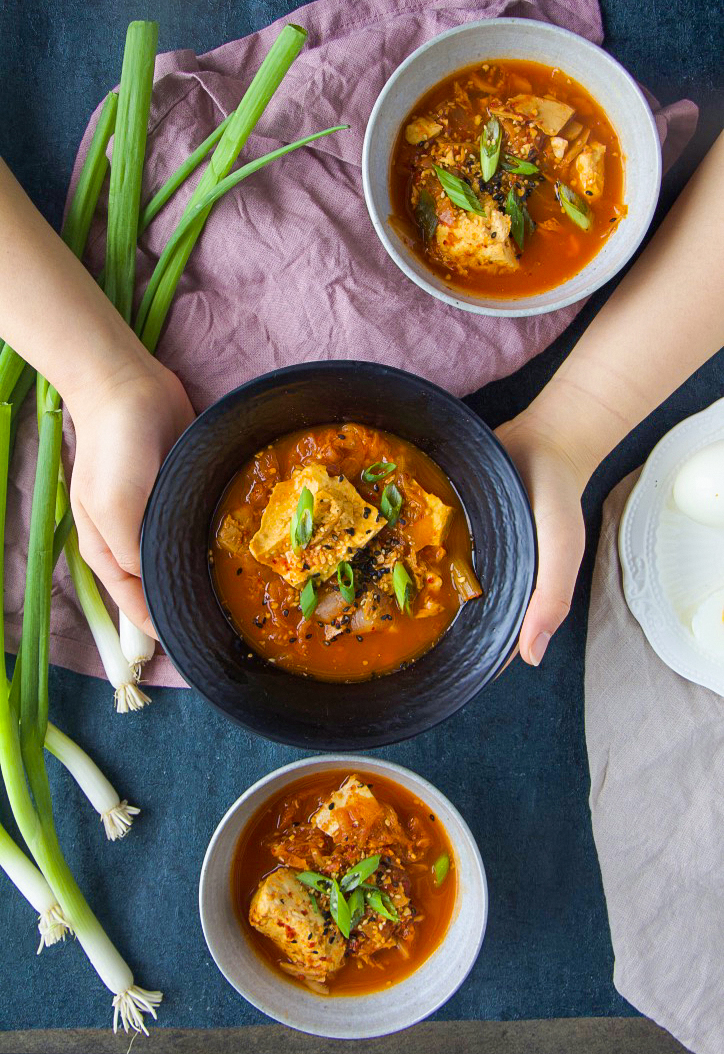
- ¼ white onion, chopped
- ¾ cup kimchi, roughly chopped (make sure it is gluten-free)
- 1 tbsp low sodium soy sauce (GF)
- 2 tsp garlic, minced
- 1 tbsp gochugaru (korean chili flakes)
- 6 oz Tuna, drained from a can (~1½ cans of tuna)
- 2 cups water or stock
- Pinch of sugar
- 8 oz silken tofu
- Over medium heat, stir fry onion for 1-2 minutes.
- Add the kimchi and cook for 2-3 minutes.
- Add the soy sauce, garlic, chili flakes, water and tuna.
- Cover and bring the mixture to boil and then lower heat to simmer for 10 minutes.
- Add the sugar, taste and adjust seasonings.
- Add the silken tofu (the easiest way is to use a spoon to scoop out large chunks into the stew).
- Cook for another 5-10 minutes.
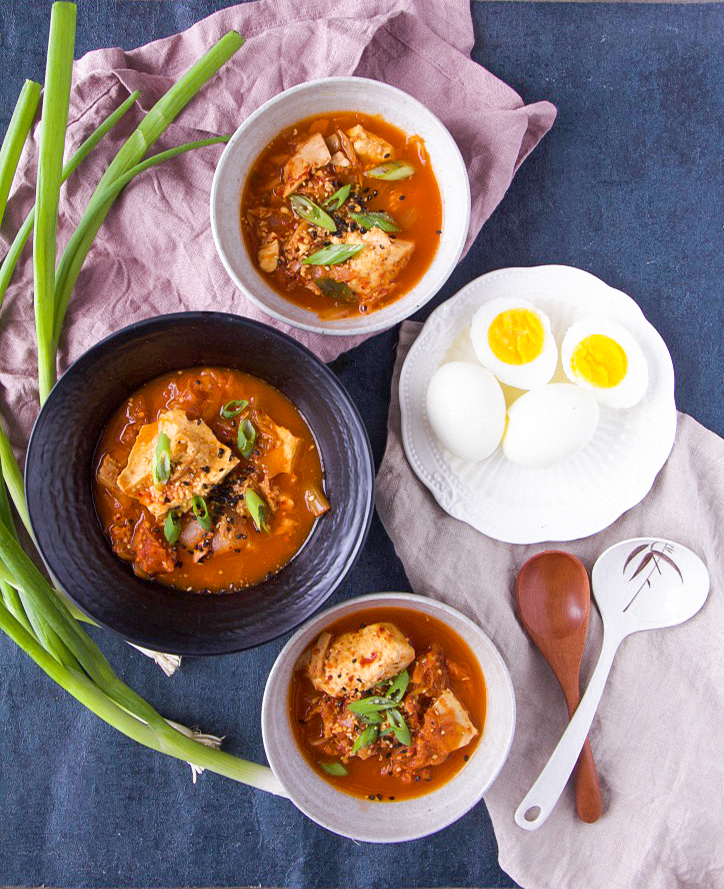
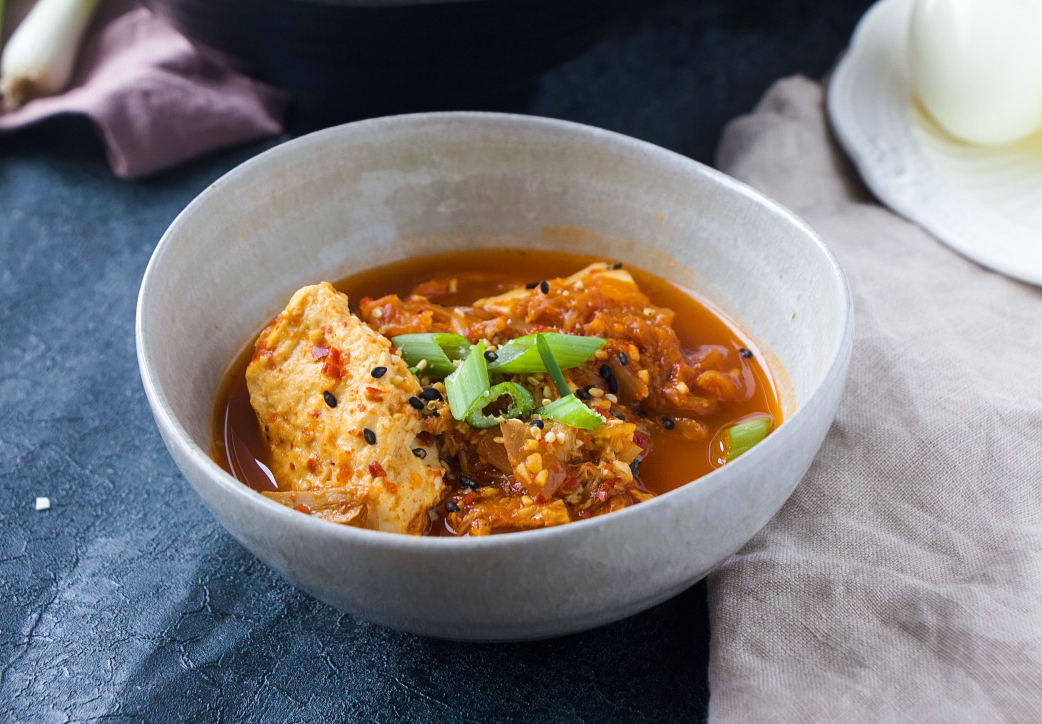
Leave a Reply